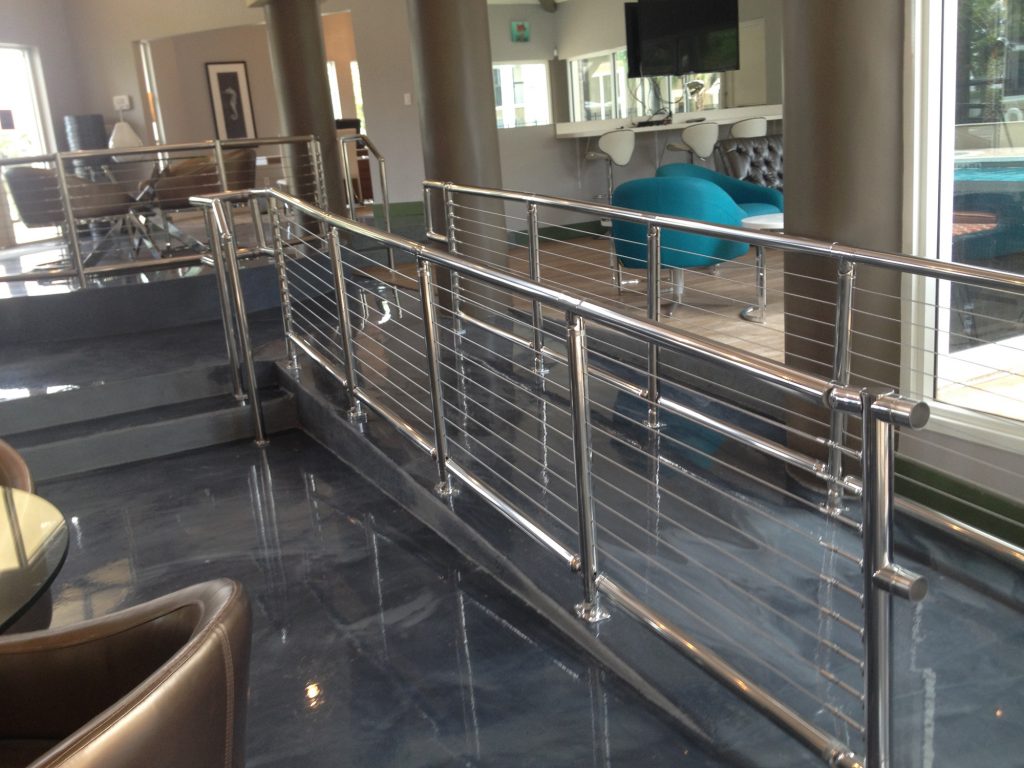Railings and handrails are a perfect pair, preventing us from taking embarrassing and painful falls. Even if you don’t always depend on handrails for balance, they are important should the worse happen. For the disabled and elderly, railings with handrails are crucial when it comes to accessibility, safety, and consistency. To guarantee that buildings are accessible to people of all mobility and ability levels, the Americans with Disabilities Act (ADA) provides a set of compliance standards. The ADA is not a building code requirement – it is a civil rights law.

ADA Requirements for Railings
The ADA requires all new public places and commercial facilities be constructed in a manner that is accessible and usable by disabled persons.
Places of public accommodation: This involves most businesses such as restaurants, government buildings, grocery stores, malls, or any other type of buildings that have a storefront.
Commercial facilities: This covers any business that has disabled employees. Even if your facility does not have a storefront, you’re required to make it ADA compliant once you hire someone with disabilities. Additionally, if you have a reception area for customers to come in to do business, this area must be accessible to everyone.

Requirements for ADA Compliant Cable Railings
- Height
The gripping surfaces of handrails should be between 34 inches and 38 inches vertically above stair nosings, walking surfaces, and ramp surfaces. This ensures that most people can comfortably reach the handrail. However, if the main users of the handrail are children, the maximum height of the handrail should be 28 inches from the ground.
- Continuity and Extensions
ADA compliant handrails must be continuous within the full length of each railing. A disabled person may require the constant support of the handrail. So, providing a continuous gripping surface ensures that all people using it get constant and reliable support. In addition, there is a requirement to have rail extensions at a minimum of 12 inches at both ends of the ramp. This provides support for users before entering and exiting the area.
- Gripping Surfaces
The gripping surfaces of handrails should be continuous without any obstructions along their sides or tops. Also, the bottom sides should not be obstructed for more than 20% of their length. A smooth railing ensures that users can maintain a consistent grip.
Gripping surfaces and any other adjacent surfaces should be free of abrasive or sharp elements. The end of the handrail should be rounded or provide a smooth return into the wall, floor, or post. This helps prevent protruding edges, which someone might unintentionally bump into. Also, handrails must not rotate within their fittings to ensure it is stable and secure for users.
- Clearance
ADA recommends that there must be a 1.5 inch clearance between the gripping surface and the wall or all adjacent surfaces. This allows for maximum grip and comfort.
- Location
Use ADA compliant railings for both interior and exterior applications. A railing must be located on both sides of stairs, ramps, decks, porches, walkways, balconies, biking trails, etc. Regardless of the side a person chooses to use, they should have the support of an ADA compliant handrail. The distance between the two railings should be at least 36 inches to allow people and wheelchairs to pass through.
Purchase ADA Compliant Cable Railings for Ramps and Stairs
At Atlantis Rail, we carry a range of ADA handicap accessibility railings and accessories. We can provide ADA options for any RailEasy, SunRail, or Spectrum system. Our rail systems are durable, reliable, and available in brushed, highly polished or powder-coated stainless steel. What’s more, we ship them ready to install, so no on-site machining or welding is required. That way you know your railing will be compliant and ready to go in no time!
Contact us or call us at 1-800-541-6829 to learn more about ADA compliant or other railing systems we offer.